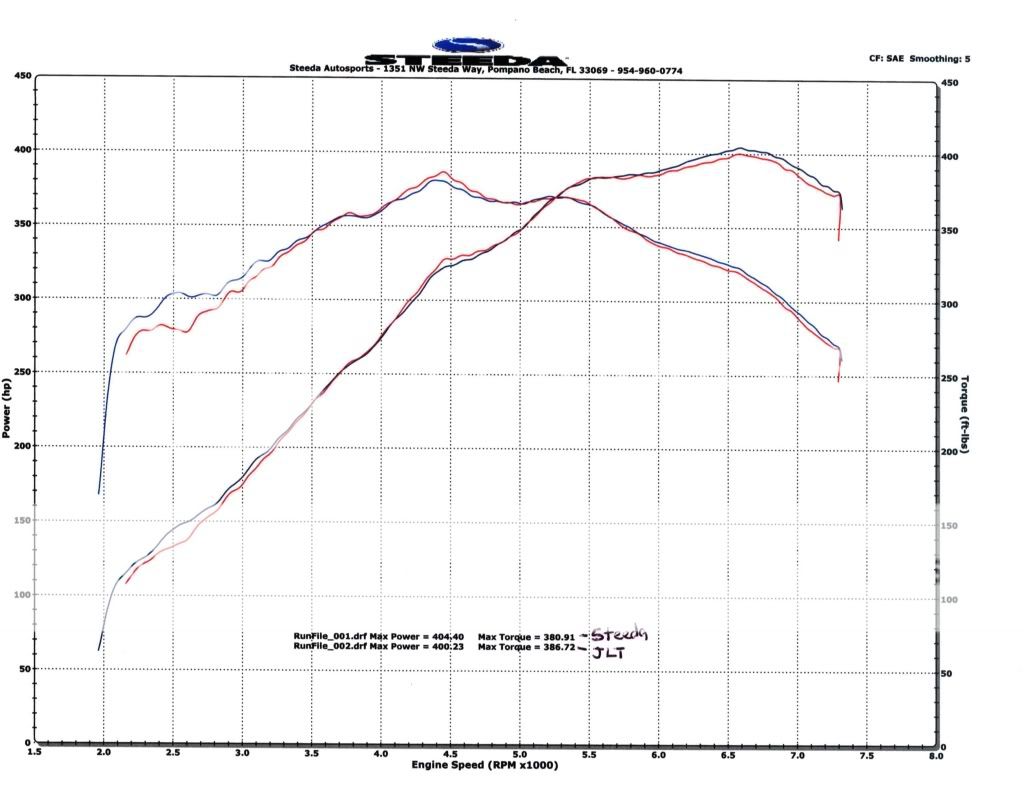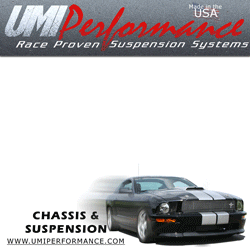Recently we revealed some details about one of the lower quality cold air kits on the market for the 2011-12 5.0L Mustang. A move that didn’t sit well with the manufacturer of that product you would probably guess. In response he issues his own press release, but a funny thing happened. In the face of the truth, there was nothing this manufacturer could do except put out a rant of excuses with no facts or data and cute photoshop edits of our illustrations.
He also mentioned how honored he is that we thought of him as competition as if he didn’t think we were, when in fact, he has worked behind the scenes in the past to exclude us, and other competitors from magazine shoot outs and official testing. A fact one of our other closest competitors, C&L Performance which we have a very open, professional relationship with can confirm as they have been the victim of it as well. Why would someone do that if they didn’t see the other companies as competition and what were they afraid of? Obviously they were afraid of the results.
Now you, the consumer will be the winner of all this, as you will now be able to learn additional tech information that will take your knowledge of not just cold airs, but vehicle performance in general.
So let’s get to it and break down “Brand J’s” response to our testing.
Response to dyno testing: If you're going to do a test you should fudge it more than a 4 RWHP gain in your favor. Heck, the dyno graph has us beating them in areas.
First off, why would you suggest that we should have fudged numbers and lied to people? Not the greatest suggestion to make, especially when the truth is much better. These comments are trying to prey on the fact most people don’t know what the term “area under the curve” means and that some people have trouble reading a dyno sheet. Now you will learn about it. Area under the curve refers to your power across the entire power band. One peak number is not important. 4 horsepower would not be significant if was just there for 1 millisecond at one specific RPM point, but when it is 4+ horsepower over a solid 1400rpm spread like our's achieved in testing, now you have something significant. In addition the 4 horsepower is just an average. Look at the dyno sheet closely and there are areas in that spread with 5 to 6 horsepower or more.
Now lets explore the rest of the curve. On the lowend side of this, there is a huge disparity in low RPM torque over a significant area. A point “Brand J” conveniently ignored because there is no argument for it. The facts are in our favor and cannot be disputed. A mass air housing that is too large will suffer a loss of velocity which will translate into less low end torque. This is something you will feel and will affect how the car feels in around town driving and how it accelerates out of low rpm situations. If you road race your car, this will also affect how your car powers out of low speed corners. The numbers speak for themselves.
Brand “J” as we will continue to affectionately call it is down in torque for a wide 1400rpm stretch down low. If we started the run at an even lower RPM the spread would have been even wider. At 2500rpm “Brand J” is down 25.2 ft/lbs of torque! Not exactly an insignificant number. By 3100RPM it is still down 9 ft/lbs, and does not pull even in torque until 3500. Overall it was down in torque from 2100 to 3500rpm. If you take an average of that 1400rpm band overall Brand “J” is down an average of 12 ft/lbs of torque! That is significant.
Now where exactly does he “beat” us? A small 400rpm spread where he makes about 5 to 6 ft/lbs of torque more. A point there and gone very quickly in lower gears , and a part of the RPM band rarely used in part throttle driving, and never used going down the dragstrip once you are past first gear. You would never be in this point in the powerband in any other gear under wide open throttle. If “Brand J” wants to hang their hat on that as a win to their consumers, they are not doing them any favors.
“Brand J” stated: The JLT has an integrated MAF for no couplers or transitions.
No transitions except for the pronounced step where the mass air tube goes into the filter and meets the radius inside Brand J likes to call his velocity stack. Surface area and angles make a difference when it comes to velocity stacks, that is why we go through the extra expense of using a significantly larger billet machined velocity stack. We don’t have to do this, and some would argue its minor, but when you have multiple minor differences, they add up, and this extra attention to detail is something we don’t overlook. Speaking of transitions, our velocity stack transitions directly into the Mass Air housing completely seamlessly, with “Brand J’s” emphatic emphasis on transitions you would expect his to be seamless as well, it is far from it and that does matter.
Now lets move on to some details on the testing involved.
“Brand J” states: 30 seconds logged and the Steeda kit with a HOT METAL shield surrounding the filter and a billet aluminum MAF housing only increased IAT's by 4 degrees? 4 degrees, seriously, we are to believe that?
This is an attempt to make it sound like we made no attempt to heat soak the kit by just running it for 30 seconds. The datalog itself was 30 seconds once the conditions to actually record the test were met. When we started the test the Steeda kit was already in the vehicle. So the vehicle was started and left to warm up outside on an 82 degree South Florida day until it reached operating temperature. That sure took more than 30 seconds to accomplish, and in the meantime the cold air was system was under the hood with the opportunity to soak up all the heat during warm up.
After that test was complete the hood was opened, the “Brand J” kit was taken out of the box and quickly installed, the hood closed, and the process started again. This worked significantly to “Brand J”’s advantage as his kit started out at room temperature and put into a car that was going to take significantly less time to reach full operating temperature. It was only a matter of a few short minutes to get the coolant temps back to the same level for testing, leaving no real time to heat soak the “Brand J” kit. We had to do this quickly because we wanted outside air temperatures to remain as close as possible, which at that point outside temp rose to 83 degrees which was the high for that day and only 1 degree warmer than during the Steeda cold air test. All this and “Brand J” still had much hotter inlet air temperatures! 13.4 degrees hotter than ours and 17.4 degrees above ambient.
Lets address one last point about out testing, the city traffic portion of the test that simulated real world driving conditions and some details on why it the results came out the way they did.
“Brand J” states: Both the JLT and Steeda use the fresh air inlet from the grille, but some how the JLT didn't cool down the same...Hmm I'm seeing a trend in test results.
Using the fresh air inlet from the grille is a bit of a stretch for “BRAND J”. Leaving part of the cool air duct hanging there open blowing into mid air and saying you are using it is simply clever marketing. Just because it is hanging there doesn’t make it used. The black scoop on the underside of our intake is where the factory cold air duct CONNECTS to our cold air, and that air gets directed where it is needed to be, inside our sealed air box. (insert pictures of Steeda scoop and JLT box with nothing connected).

For both tests we spent driving the same traffic route for nearly 15 minutes. Plenty of time to heat soak both kits. For both tests after this drive we stopped at the same location, set up the datalog, then started driving. From the spot we stopped at to the next traffic light at 45 miles per hour took approximately 60 seconds. This is typical of city driving conditions in stop and go traffic to accelerate then stop in this interval and we wanted to see what would happen to air charge temps during this time.
The results spoke for themselves. We were cooler both at the start and the end of the tests after heat soaking both kits in city driving is South Florida heat.
When you look at the power band “Brand J” tried to employ clever marketing by saying “why would you pay more for 4 horsepower?” If that power is spread of 1400RPM, that answer would be yes it is worth it, but the better question is “is an extra 25 ft/lbs of torque worth a little extra”, and not just 25 ft/lbs, but the rest of the attention to detail that goes into our kits. The price difference is a very small price to pay.
There are some who would argue the difference here would only be a tenth of a second in real world performance at the drag strip. However a tenth of a second at the dragstrip is around a full car length, not an insignificant difference at all. One full second of lap time on the road course can be 2 to 4 full car lengths depending on the track and speed of the course. These are significant differences that the performance enthusiasts that come to us are looking for, not to mention the quality in design and construction we provide as well. In addition, the extra low end torque and response of our kits will make your car noticeably more fun to drive, that benefit alone is worth spending a little extra as it is something you will enjoy each and every time you drive your car.
And now you, the consumer is the winner in all this, because regardless of what companies kit you choose, you are now armed with the knowledge to make intelligent buying decisions.
We would like to thank everyone who called us, emailed us, and sent us private forum messages with your support of our original article!



